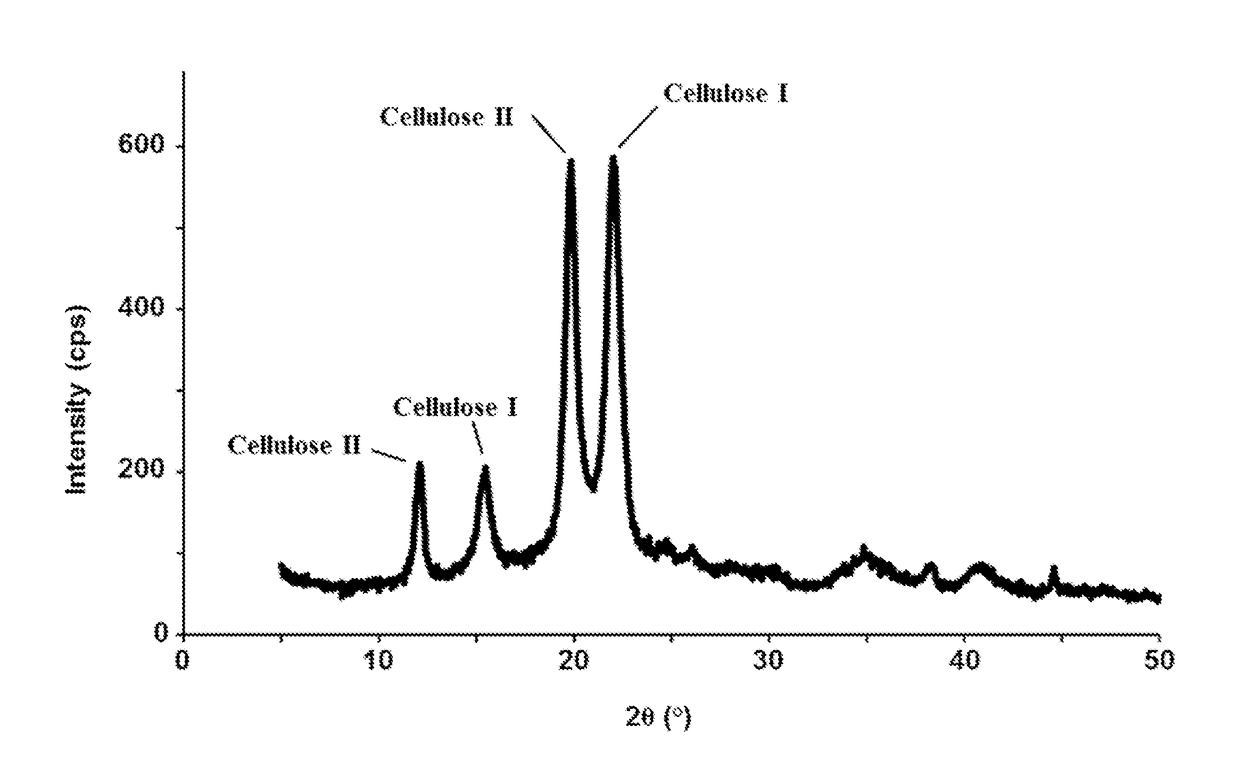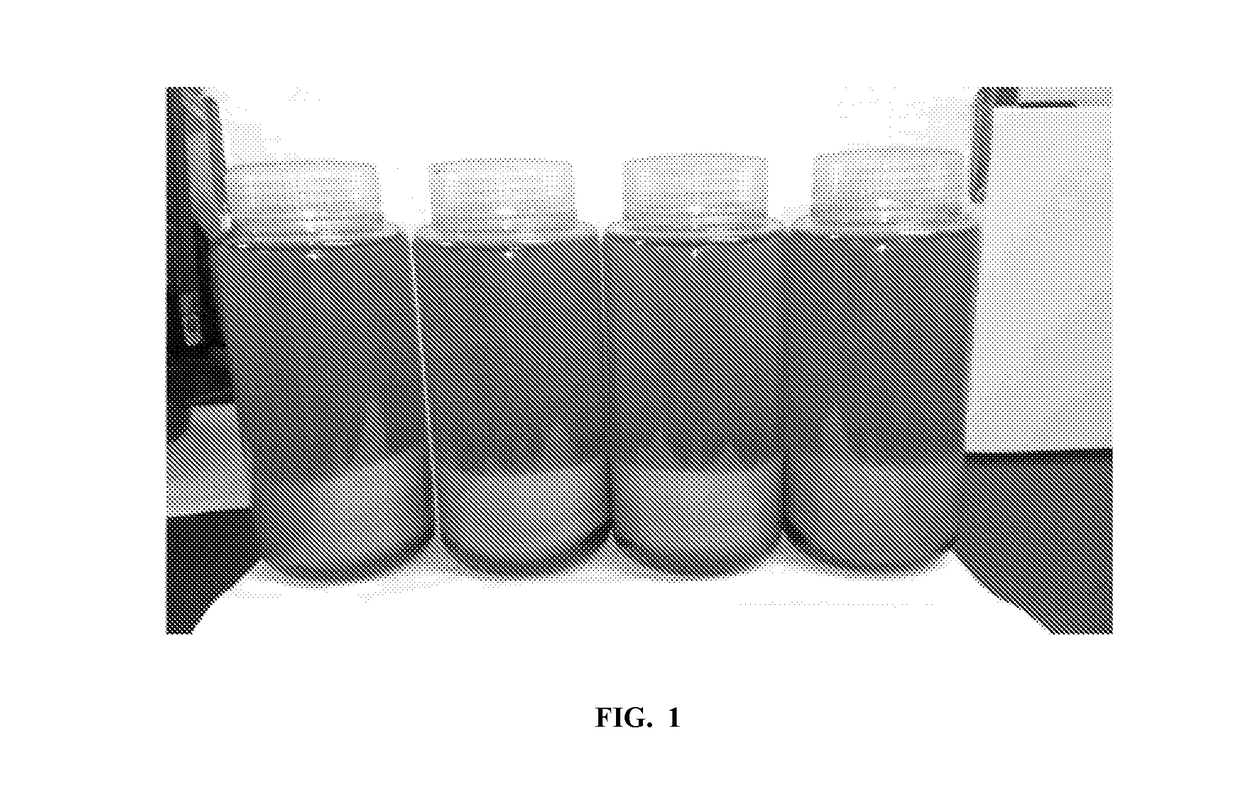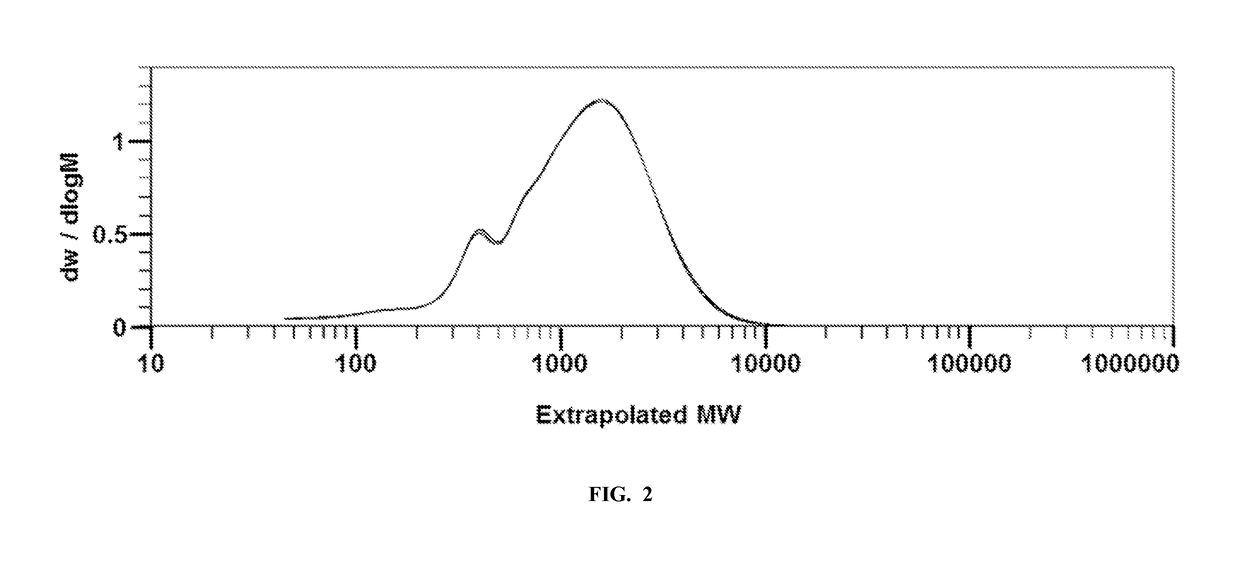Cellulose-containing compositions and methods of making same
a technology of compositions and cellulose, applied in the direction of cellulose adhesives, aldehyde/ketone condensation polymer adhesives, material analysis using radiation diffraction, etc., can solve the problems of complex process, high cost, time-consuming, etc., and achieve the effect of maintenance, reducing the cost of production, and improving the quality of production
- Summary
- Abstract
- Description
- Claims
- Application Information
AI Technical Summary
Benefits of technology
Problems solved by technology
Method used
Image
Examples
example 1
[0327]In this example, a cellulose-rich “white layer” was formed from biomass using a two-step process. First, an aqueous slurry of comminuted biomass was subjected to a temperature of about 200-250° C. for a period of about 1-8 minutes under a pressure sufficient to keep all of the fluid in liquid form (generally less than about 50 bar). The resulting mixture was filtered, the solids re-slurried with water, and the slurry subjected to a temperature of about 350-400° C. for a period of less than about 10 sec under a pressure sufficient to keep the fluid in liquid or supercritical form (generally less than about 250 bar). The resulting mixture was centrifuged at about 4000 rpm for 10 min, and three different fractions were obtained: (i) a liquid phase containing gluco-oligosaccharides (GOS-0), and a solid fraction containing (ii) a “white layer” (WL-0) and (iii) a “dark layer” (DL-0). The WL-0 was re-dispersed in water and centrifuged again at the same conditions, thereby forming ano...
example 2
[0332]This example relates to the analysis of the water-soluble fraction H2O-1 from Example 1. The water-soluble fraction, containing cello-oligomers, was analyzed with an Agilent 1260 μHPLC equipped with Waters Ultrahydrogel 120, 500 and 1000 columns. All samples were prepared at the concentration of about 1 mg / ml. Pure degassed and 0.45μ. filtered DI water was used as an eluent at a flow rate of 0.5 ml / min. MEGAZYME cello-oligomers were used as calibration standards for cellotriose, cellotetraose, cellopentaose, and cellohexaose. Glucose and cellobiose standards were purchased from Sigma-Aldrich. Samples were run at a temperature of 30° C. with the RI detector kept at 55° C. The SEC and GPC results were analyzed using the Cirrus extension program for ChemStation software to calculate MMD of all components.
[0333]Tables 2 and 3 demonstrate the composition of cello-oligosaccharides present in WL-0 and WL-1 water-soluble fractions. Table 4 shows the calibration data used to determine ...
example 3
[0334]This example relates to the analysis of the methanol soluble fraction MeOH-1 from Example 1. The methanol soluble fraction contained lignin and was analyzed with an Agilent 1260 μHPLC equipped with PSS MCX 100000 and 1000 A columns (the columns are available from Polymer Standards Service (PSS)). All samples were prepared at about 1 mg / ml concentration. Pure degassed and 0.45μ filtered 0.1 M NaOH was used as the eluent at a flow rate of 0.5 ml / min. PSS sulfonated polystyrenes available from PSS were used as calibration standards. Samples were run at the temperature of 30° C. with the RI detector kept at 30° C. and the UV detector set to 280 nm. The SEC and GPC results were analyzed using the Cirrus extension program for ChemStation software to calculate MMD of all components.
[0335]Specifically, the methanol soluble polyphenolics were analyzed with PSS MCX columns and the resulting MMDs are found in Table 5. The analysis was performed using calibration standards with retention ...
PUM
| Property | Measurement | Unit |
|---|---|---|
| temperature | aaaaa | aaaaa |
| wt. % | aaaaa | aaaaa |
| wt. % | aaaaa | aaaaa |
Abstract
Description
Claims
Application Information
 Login to View More
Login to View More - R&D
- Intellectual Property
- Life Sciences
- Materials
- Tech Scout
- Unparalleled Data Quality
- Higher Quality Content
- 60% Fewer Hallucinations
Browse by: Latest US Patents, China's latest patents, Technical Efficacy Thesaurus, Application Domain, Technology Topic, Popular Technical Reports.
© 2025 PatSnap. All rights reserved.Legal|Privacy policy|Modern Slavery Act Transparency Statement|Sitemap|About US| Contact US: help@patsnap.com



